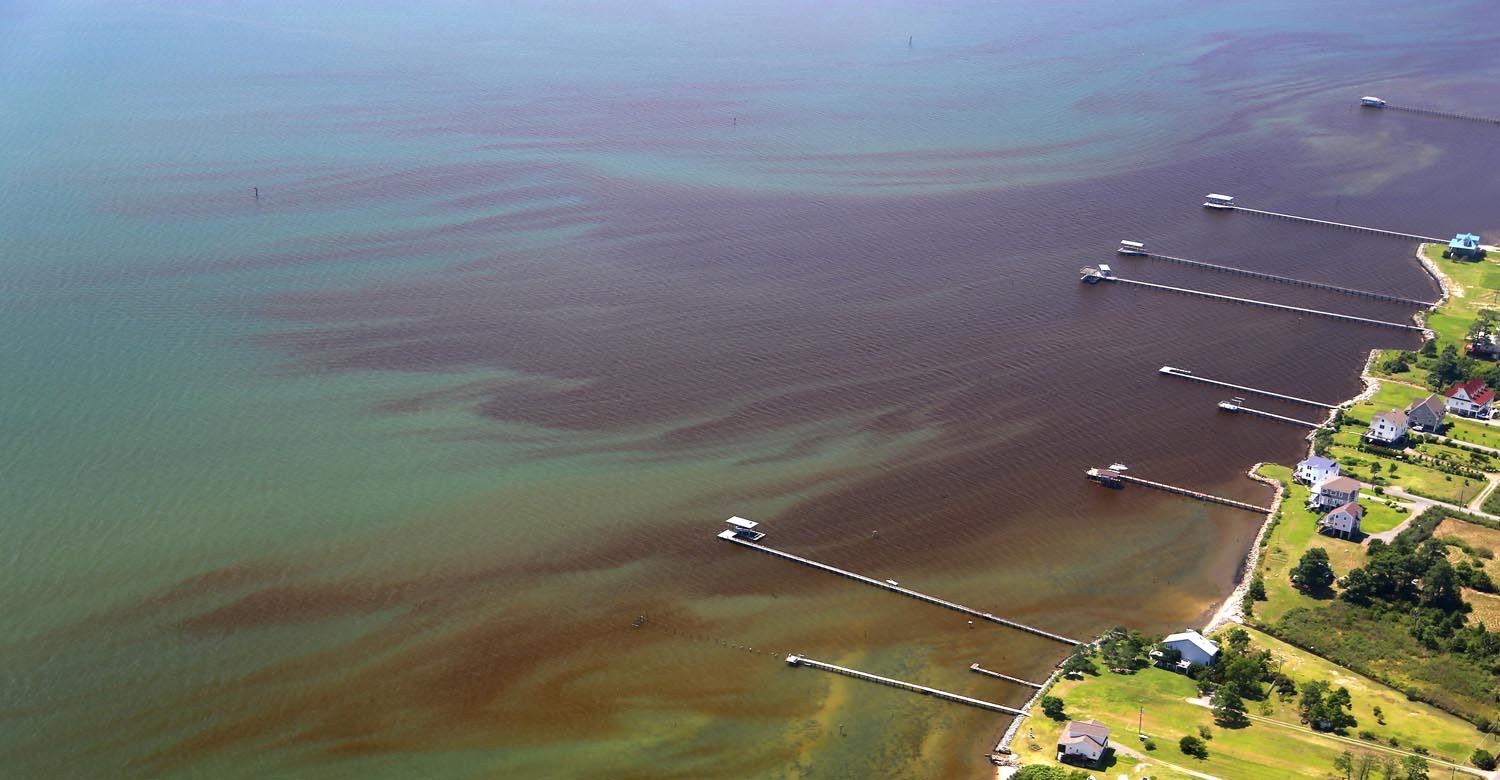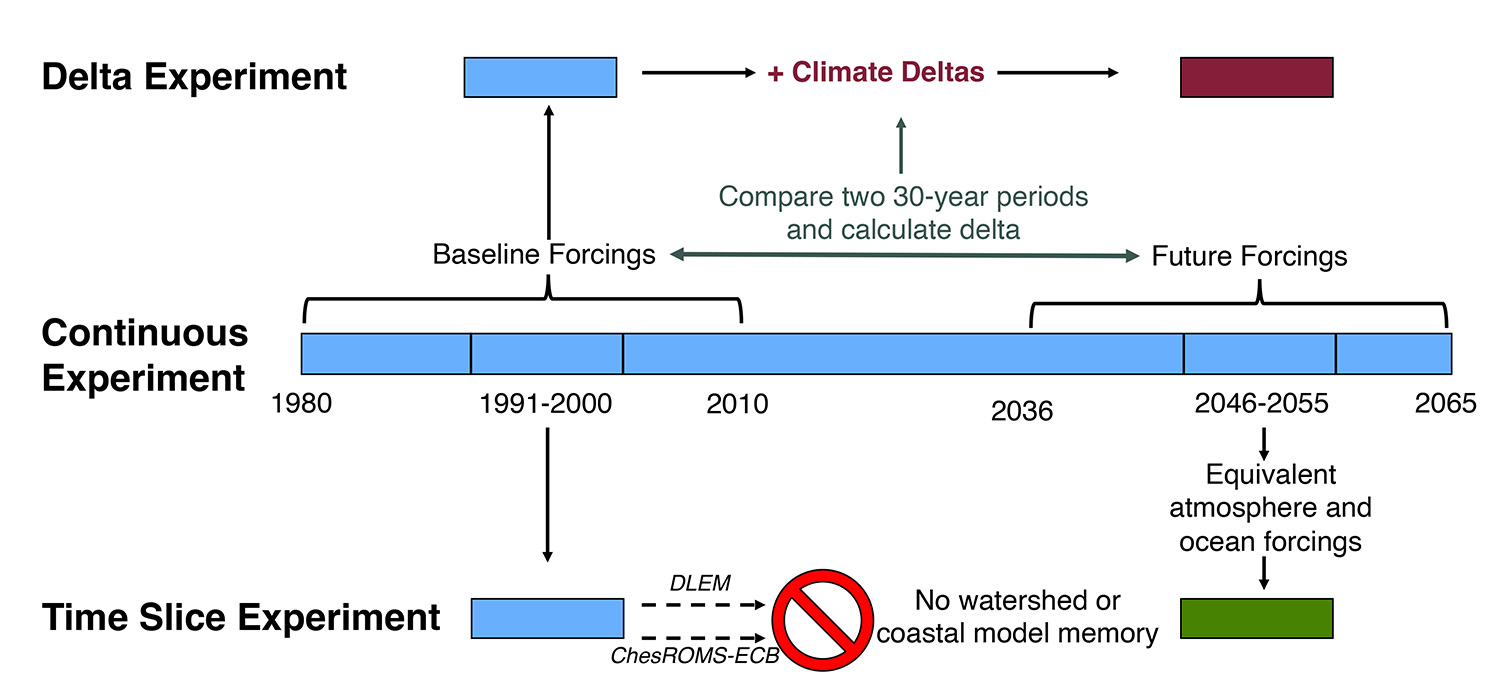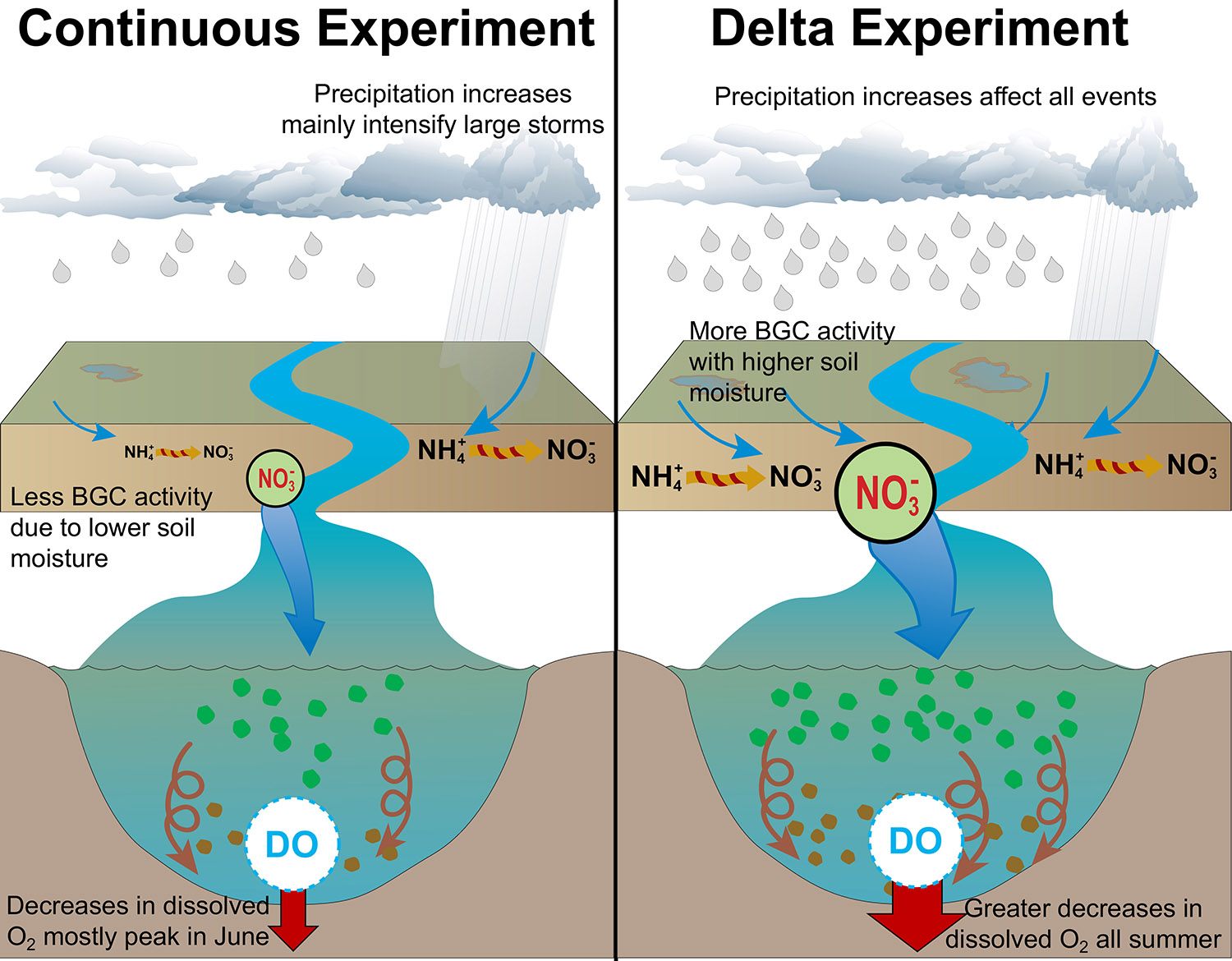Study finds current models may overestimate the future impacts of climate change on Chesapeake Bay dead zones
 A study led by scientists at William & Mary’s Batten School & VIMS has demonstrated surprising variability in the results of different modeling methodologies for predicting future hypoxic, or low-oxygen, conditions known as dead zones in the Chesapeake Bay. The findings suggest that current approaches used to establish environmental goals may overestimate future hypoxia by not fully accounting for environmental variability caused by climate change.
A study led by scientists at William & Mary’s Batten School & VIMS has demonstrated surprising variability in the results of different modeling methodologies for predicting future hypoxic, or low-oxygen, conditions known as dead zones in the Chesapeake Bay. The findings suggest that current approaches used to establish environmental goals may overestimate future hypoxia by not fully accounting for environmental variability caused by climate change.
Hypoxic conditions form in the Chesapeake Bay following the introduction of excess nutrients from polluted runoff, which contribute to the growth of naturally occurring algae. The decomposition of this algae removes oxygen from surrounding waters, creating dead zones that suffocate marine life. The annual extent of these dead zones is monitored as a key indicator of Bay health, and the Chesapeake Bay Program (CBP), the regional partnership that manages Bay restoration efforts, uses computer models based on climate projections to establish future nutrient management goals.
Published in Scientific Reports, the study used land- and ocean-based climate projections and historical data to perform the first continuous simulation of environmental conditions within the Chesapeake Bay and its watershed from 1980-2065, requiring more than 40 days of supercomputer efforts. The researchers’ goal was to compare the continuous methodology to the less computationally demanding delta and time-slice methods.
The delta method is the most commonly used approach for developing future projections of estuarine conditions in the region, and it is used by regulatory agencies and the CBP to meet established water quality goals. This method combines historical data and climate projections to predict environmental changes within the Bay. However, it bases its predictions on the average difference between historical weather patterns and future projections to avoid the extensive calculations required by the continuous method. Alternatively, the time-slice method applies the same future conditions, such as air temperature and precipitation, used in the continuous method in addition to the same baseline data used in the delta approach but avoids simulating the intervening years to save time.
 The results showed similar increases in mean annual hypoxic volume for the time slice and continuous methods, increasing 9% and 11%, respectively. However, the delta method doubled those results, producing a 19% increase.
The results showed similar increases in mean annual hypoxic volume for the time slice and continuous methods, increasing 9% and 11%, respectively. However, the delta method doubled those results, producing a 19% increase.
“The results were surprising, and they call into question the reliability of future scenarios that use the delta methodology,” said Kyle Hinson, who led the study while earning his Ph.D. at W&M’s Batten School of Coastal & Marine Sciences and is now a postdoctoral researcher at Pacific Northwest Laboratory. “There are many processes that will impact future hypoxia within an estuary like the Chesapeake Bay, and we found major differences in the way these were accounted for between the delta and continuous approaches.”
The biggest difference between the two methods was the way in which precipitation was shown to impact nutrient runoff into the Bay. Because it bases future patterns of rainfall on historical patterns, the delta method failed to accurately account for changes in future precipitation caused by climate change. While the overall amount of precipitation is predicted to increase, and that total was factored into all experiments, the continuous method more accurately represented predictions of heavier individual rain events with longer dry periods between them. The delta method spread the precipitation more evenly.
 “The delta method gives us this result because it expects the soil to stay a bit wetter, which modifies how things cycle within the soil and in this scenario leads to more nitrate entering the Bay,” said Hinson. “The added nitrate jumpstarts algae growth, which eventually die, sink to the bottom and are consumed by bacteria that draw down oxygen levels.”
“The delta method gives us this result because it expects the soil to stay a bit wetter, which modifies how things cycle within the soil and in this scenario leads to more nitrate entering the Bay,” said Hinson. “The added nitrate jumpstarts algae growth, which eventually die, sink to the bottom and are consumed by bacteria that draw down oxygen levels.”
Hinson’s coauthor and Ph.D. advisor Marjorie Friedrichs noted that the results of the study challenge some common assumptions about the impacts of climate change.
“Importantly, the continuous method also showed a decrease in freshwater discharge into the Bay despite increased precipitation totals,” said Friedrichs. “This can seem counterintuitive, but the evapotranspiration caused by increasing temperatures outweighs the increased precipitation.”
Mitigating future dead zones
While all methodologies project an increase in the volume of hypoxic water in the Chesapeake Bay due to climate change, prior research shows these increases can be more than offset by reducing the amount of nutrients entering the watershed.
In 2010, the U.S. Environmental Protection Agency established the Chesapeake Bay Total Maximum Daily Load (TMDL), which sets limits on the amounts of different pollutants entering the Bay to maintain water quality standards. Additionally, the six states within the Bay’s watershed and Washington, D.C., established their own plans and milestones to achieve nutrient pollution-reduction goals set under the Chesapeake Clean Water Blueprint by 2025.
While it doesn’t appear likely that these goals will be met by the 2025 deadline, significant progress has been made. According to another study published by Hinson and his colleagues in the journal Biogeosciences in 2023, the attainment of established nutrient reduction targets for the Chesapeake Bay will reduce annual hypoxia by approximately 50% compared to levels seen in the 1990s.
“The nutrient reduction targets established for the Bay did not factor in the impacts of climate change. However, if we hadn't established these targets, things would be much worse,” said Friedrichs. “Having a better understanding of all the processes at play is really important for managers who will be charged with establishing new water quality goals.”
The processes affecting hypoxia don’t just impact marine life, they also play a role in carbon cycling. Increased algae growth draws in more carbon, which eventually sinks to the bottom and either stays within the Bay or is exported to the open ocean. Accurately modeling conditions in coastal estuaries is becoming increasingly important for establishing reliable global carbon budgets.
“The health of the Chesapeake Bay is important for so many reasons, and our research helps to refine the models used to manage our impacts on the ecosystem,” said Hinson. “The good news is that if we continue our progress and reach the goals we’ve already set, we will more than offset hypoxia increases due to climate change.”
Hinson and Friedrichs collaborated on this study with Pierre St-Laurent, senior research scientist at W&M’s Batten School & VIMS; Raymond Najjar and Maria Herrmann, both from Pennsylvania State University; Zihao Bian, from Nanjing Normal University; and Hanqin Tian, from Boston College.
For those interested in learning more about dead zones within the Chesapeake Bay, the Batten School & VIMS publishes an annual Dead-Zone Report Card that provides a retrospective analysis of the severity of hypoxia within the Bay.
